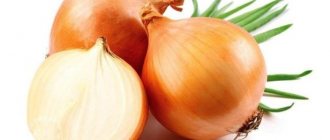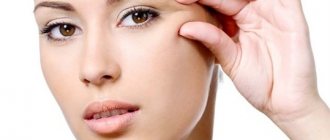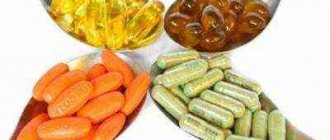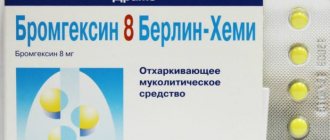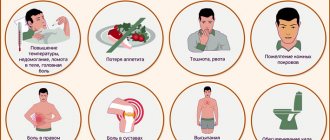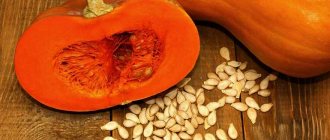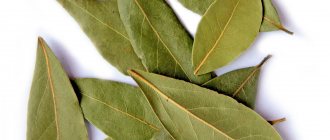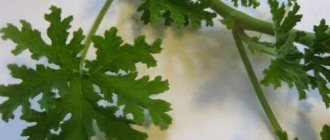Available means
During the teething process, there is no need to panic; it is important to remember that this is a natural process for the body. You just need to be patient and somehow get through the unpleasant time, using various available means. To somehow alleviate the condition, especially if you cannot take painkillers for one reason or another, you can use the following methods:
- Cool vegetables and fruits. This is an excellent product for gum massage. Many centuries ago, adults used it for themselves and to help children, when there were no special toys yet. Simply take small pieces of carrot or apple and hold them between your gums. The products will not only massage your gums, but will also effectively cool them. Rusks are not entirely suitable for achieving this goal, as they can injure your gums.
- Cold lotions made from gauze soaked in clean, chilled water. You can also use a soft toothbrush. This is an excellent product for adults and children.
If you need to alleviate the condition not at home, but at work, for example, if you don’t have vegetables on hand, you can buy inexpensive remedies at the pharmacy. We are talking about special anesthetic gels that have a unique local anesthetic effect. Typically, this is lidocaine, which can only be used by adults.
If the gel is purchased for children, the lidocaine content should be minimal. In addition to the analgesic component, these products contain antiseptics, as well as natural ingredients - medicinal chamomile or other plants. Modern gels of this type can relieve pain for about 30 minutes.
Important! Do not use the gel before breastfeeding. The use of such drugs leads to loss of sensitivity not only in the gums, but also in the tongue, which will prevent the baby from sucking the breast.
Teeth cutting: folk remedies to help a child
When a child is teething, he feels bad and cries. And mom doesn't know how to help. There are pharmaceutical products, but they often cause allergies. Therefore, we offer you folk remedies for teething. It’s up to you to trust them or not, but our grandmothers used them. 1. A clean mother’s finger, which he will chew with ecstasy, can make it easier for the baby to get his first tooth out. You can massage baby's gums with your finger.
2. Wipe the gums with a finger wrapped in a cloth soaked in soda or borax solution (1 teaspoon per glass of water).
3. Use of ice. You can wrap a small piece of ice in a cloth and lightly rub it on your gums, this will help relieve pressure and pain from your gums. But you need to constantly ensure that the ice itself does not touch the gums; it is also very important that the ice in the cloth constantly moves along the gums, without staying in the same place for a long time.
4. Terry napkin. You can give your child a terry cloth to chew on after cooling it down beforehand.
5. Give your child a special medicinal orris root ring for teething (they are sold at the pharmacy).
6. Lubricate the baby's gums with honey, this helps teething. Only in this case you need to make sure that the child is not allergic to it. You need to apply a little and rub in at the same time. Otherwise, the child will simply lick the honey with his tongue, and there will be no effect. Before going to bed, give your child 1 teaspoon of honey (if there is no allergy). This will calm the child and make it easier to fall asleep.
7. Lubricate the child’s gums with a solution of soda: 1 teaspoon per 1 glass of water, this helps teething.
8. Chamomile is a good anti-inflammatory agent. It can be used in several ways. To relieve pain, you need to give your baby one or two teaspoons of chamomile tea. You can make a warm compress from the brewed herb and apply it to the side of your cheek where teeth are cutting through. You can also rub chamomile oil into the skin of your cheeks.
9. Soothing tea. The tea will be useful for both mother and baby, as it has a calming effect, and it will also relieve pain for the baby. Take equal parts of lemon balm, chamomile, catnip and lavender flowers. Pour a tablespoon of the mixture into a glass of boiling water and leave for 15 minutes, then strain. Tea can be drunk in any quantity; it is safe for both the child and the mother.
10. Clove oil. It has an analgesic effect on the baby's inflamed gums. Since pure oil can burn your gums, dilute it in a 1.5:1 ratio with olive or almond oil.
11. Roots. You can give your child the roots of strawberries or chicory to chew on. These plants slightly numb the sore spot, and the root itches the gums.
Folk remedies for pain relief
Pain and discomfort during teething can be overcome very quickly and effectively using various folk remedies. All of them are simple, accessible and easy to use. Here are the most popular folk remedies for treating teething and eliminating unpleasant symptoms:
- Soothing warm tea. It can be drunk by both adults and children. Properly prepared tea has a pronounced calming effect and also significantly relieves pain. To prepare tea, you will need to take chamomile, lemon balm, lavender or catnip in equal quantities. A tablespoon of the resulting mixture is poured into a glass of boiling water and infused for 15 minutes. You need to take the product after straining. The advantage of this tea is that it can be taken in absolutely any quantity, since the composition is classified as safe;
- Clove oil. This product is characterized by a unique analgesic effect and reduces inflammation in the gums. Pure oil can burn your gums a little, so before use the product must be diluted in a ratio of one and a half to one. The product should be diluted not with water, but with almond or olive oil;
- Chamomile. The herb has an ideal analgesic and calming effect. A more concentrated composition can be rubbed into the gums, and a diluted one can be drunk, even for children;
- Valerian. The product has a calming effect. This remedy can be used by adults, since the herb is infused with brandy during the preparation process. To prepare the solution, you need to crush 30 grams of valerian roots to a powder and then pour half a glass of brandy over everything. The product is infused for three days, and then the resulting composition can be lubricated on the gums. The product ideally relieves itching and mild pain;
- Chicory or strawberry roots. These roots can be given to a child to chew to quickly get rid of pain and quench annoying itching;
- Sage. During teething, babies can be given a weak decoction of sage. The composition can simply be rubbed into the gums, thereby not only eliminating all unpleasant phenomena, but also strengthening the gums and teeth. The decoction can be added to the bath when bathing and thereby achieve a high calming effect;
- Herbal tea based on lemon balm, lavender, chamomile, catnip and primrose. A spoonful of the resulting mixture is poured with a glass of boiling water and infused for 30 minutes. This tea can completely replace water for a child. The baby will not be capricious or cry after taking it;
- The gums can be treated with a composition of chamomile, chickweed and burdock roots. Plants must be infused with water. This product can also be used by adults;
- Shilajit gives a powerful analgesic effect. Finding this Altai folk remedy is not difficult; it is sold in every pharmacy;
- Propolis. The product ideally helps adults and children. To prepare a useful remedy, you will need to take the substance and dissolve it in a small amount of water. You can not only wipe your gums with the product, but also take the composition internally;
- Lubricating the gums with honey helps a lot; it is important that there is no allergy to this product.
To achieve a lasting positive effect, it is worth supplementing these treatment methods with simple rules that will alleviate the general condition. You need to sleep on a slight elevation. This will drain blood from the gums, so they will be much less bothersome.
It is also worth finding a means that will effectively distract you during a difficult period. For kids, this could be an interesting toy, book or cartoon.
In most cases, only folk remedies for teething in babies help alleviate the baby’s condition. Many parents fall into despair, not knowing what to do to relieve sore gums. In fact, there is no reason for alarm, since every child goes through this stage of development.
So, you know the most popular and effective ways to relieve teething in babies. By the age of three, there should be 20 of them in the child’s mouth. If you have any questions about the timing and symptoms of teething, you should contact your pediatrician. Only a doctor can examine the baby and, if necessary, prescribe the correct correction.
Let your baby's teething experience be as comfortable and painless as possible!
How can you help a child who is teething? Experts advise using special gels with an anesthetic effect. Such drugs will quickly and effectively alleviate unpleasant, painful sensations, cool the gums, and prevent the inflammatory process. After using them, the child will feel much better.
But, before using any medicinal product, you need to carefully study the instructions, and even better, consult a doctor. The most popular drugs are Kalgel, Kamistad, Cholisal. If they don’t help, then you can try Viburkol suppositories.
Folk remedies for teething
All young children go through the agonizing and painful process of teething.
Parents are especially worried about this, because few people find it pleasant to watch a child cry and be nervous.
To survive this period, you need to carefully monitor the process itself and, in case of deviations, immediately consult a doctor.
Only after this can you safely use folk remedies. Traditional medicine will help alleviate the pain and allow the child to experience it less painfully.
It is very important not to delay visiting a doctor if the pain persists for a long time, since during teething there is a high probability of various types of pathologies and infections occurring.
How does teething work?
As a rule, a baby’s first milk teeth begin to appear at 5–6 months. Deviation from the norm can be up to two months in both directions.
Already a month before the teeth begin to appear, a small child begins to experience strong discomfort, which is accompanied by itching in the gums and changes in the child’s behavior.
The main manifestations of this process are:
- child's irritability;
- heavy salivation;
- poor appetite;
- sleep disorders;
- stool disorder;
- rash on buttocks.
In almost all children, the cutting process is accompanied by acute pain. In order to somehow reduce the resulting discomfort, a small child tries to keep something in his mouth and suck on it all the time.
The order of teeth cutting is as follows:
- The lower incisors appear first, followed by the upper pair of incisors.
- Then comes the second pair of lateral upper incisors, and after a while the lower ones.
- As soon as a child turns one year old, his lower pair of chewing teeth begin to erupt first, and only then the upper.
- After some time, the lower fangs erupt, and then the upper ones.
- The last are the posterior chewing teeth, it all starts with the lower jaw, after which they begin to grow from above.
By the age of two, the child receives all his teeth. In some cases, teeth may erupt out of order. This process must be supervised by a doctor. At this time, you need to especially carefully monitor the child, as various pathologies and infectious diseases may appear.
If teeth begin to come out too early, this may indicate that the child has problems with the endocrine system or rickets.
Consultation with a doctor during this period should be mandatory - regardless of whether the child is in pain or not.
Ways to understand that your baby is teething
How to understand that teeth are being cut? According to pediatricians, the lower incisor should come out first, then the second paired one. Next comes the time for the upper central incisors and the lateral incisors above and below. All of them are expected to grow up to a year. And from the age of one and a half years, the first molars begin to appear.
The child is teething, what other symptoms exist besides the sign described above? Here's a short list:
We suggest you read: How long does it take for swelling to go away after wisdom tooth removal?
- Inflamed, swollen gums.
- Developing the habit of putting everything in your mouth.
- Loss of apatite.
- Restless sleep.
- Crying at night.
Teething also affects the baby's behavior - he begins to be capricious more often and ask to be held, and quickly gets excited. There is also intolerance to harsh sounds and bright light. Mood swings are common.
Teething may be accompanied by:
- high temperature;
- frequent regurgitation;
- constipation or diarrhea;
- rashes on the cheeks;
- cough and runny nose.
Gum massage
From time to time, you should massage your gums with clean hands. An adult can do this on their own, and the baby can be helped by his mother’s finger. This is an ideal opportunity not only to alleviate the general condition, but also to significantly speed up the teething process. Special toys with a cooling effect are also suitable for children.
In terms of effectiveness, gum massage can be equated to lubricating teeth with special medications. It perfectly copes with pain and helps teeth come out faster. It must be done carefully, without pressing too hard, it is important not to injure the gums. Hands must be sterilely clean, as there is a risk of serious infectious complications.
You need to start the massage from the area as far as possible from the place where the tooth erupts, gradually approaching the epicenter of the pain. The massage should take an average of 20 minutes.
Gum massage for painful teething
This is the easiest way to relieve pain and itching in babies, improving blood circulation and speeding up teething. To carry it out, use a gauze swab, finger or a special toothbrush.
Method of massaging the gums with your finger.
- Wash your hands well, paying special attention to the area under the nails, and treat with an antiseptic.
- It is recommended to massage with the little finger, index finger or thumb exclusively above the gums, starting with stroking back and forth to the painful area. Using the same movements, gradually approach the future tooth.
- You can rub and squeeze the area. The criterion for correct execution is the child’s emotions and his condition.
- The procedure takes 15-20 minutes.
- All movements should be light and careful so as not to injure the child.
This technique is suitable for massage with a special silicone finger brush.
You can also use a piece of ice wrapped in cloth or gauze, or a swab soaked in cool water. The procedure is performed strictly in the area of the emerging tooth for no more than 5 minutes.
The advantages of this method of relieving pain in infants are the absence of contraindications, side effects, and the ability to perform an unlimited number of procedures. Spoons and pieces of food, including bread and sugar, that injure the gums are not recommended as devices for massage.
If the pain during teething is severe, a small amount of lidocaine, previously diluted with water, is used. The addition of acetylsalicylic acid is contraindicated.
Teethers that have a handle for holding and an uneven surface to eliminate itching of the gums can help with painful conditions. Cooling toys contain a gel or liquid inside that cools in the refrigerator within a few minutes. As a result of their use, the gums are cooled and pain is reduced.
Baby care
If adults are teething, it is unpleasant, but it is quite possible to survive, since there are more than enough means at your disposal to eliminate pain and itching. There are a huge number of painkillers alone. With kids the situation is much more complicated. The process is quite often accompanied by such unpleasant phenomena as intestinal upset and fever. All this causes even more problems.
If the temperature begins to rise against the background of teething, you need to act as if you had a common cold. With a very serious increase, you can wipe the baby with vinegar or vodka. You can also take various children's medications that reduce fever or relieve pain.
During teething, the baby experiences increased salivation. This is not a simple phenomenon that effectively prevents the occurrence and development of infection in the mouth.
Important! During this difficult time, parents should make sure that there is no rash or such a phenomenon as maceration on the surface of the skin. To prevent this phenomenon, a small amount of a special hygiene product or protective cream should be rubbed into the skin.
Choosing a teether
Teether nipples. They, like regular nipples, are equipped with a limiter and a relief insert made of silicone or latex. This is the optimally convenient option for a teether.
Cooling teethers. A special material is used for their manufacture. The inside of such products is filled with water or gel. Before giving the teether to your child, you need to keep it in the refrigerator for some time so that it acquires a cooling effect. It is advisable to choose a model equipped with a handle - then the baby will not freeze his fingers.
How to get a restful night's sleep
At night, all the charm of the period when the baby is cutting its first teeth is felt especially vividly. Therefore, the question: “How to ensure a good night’s sleep for your baby?” very relevant for young mothers. This requires an integrated approach.
Before putting your child to bed, let him lie in a bath with medicinal herbs that have a calming effect. Then feed him, give him something to drink and apply pain-relieving gel. These activities will help your baby sleep more peacefully. And during the daytime there will be fewer difficulties, since he will be rested and well-slept.
In conclusion, let’s say that the most important thing is the fact that during teething, moms and dads have the opportunity to help their baby. You need to recognize the symptoms in time and make an appointment with a doctor.
How to help a baby
The desire to help a child in any way is understandable and normal. It is not only possible, but also necessary to alleviate the baby’s condition. Prolonged pain negatively affects the child’s internal organs and brain. But you need to help the baby carefully and carefully so as not to harm him with your inept actions.
Today there are many ways to reduce pain and speed up the eruption of molars. And for this it is not at all necessary to take a sick child to a pediatric dentist. Helping your baby using traditional methods can be no less effective. So what methods and means can you quickly and safely relieve a child of pain when erupting molars appear?
The child's capricious behavior during the appearance of baby teeth is caused not so much by pain as by discomfort. When children are worried about something, they become nervous, scream and cry. Unpleasant sensations in the oral cavity for a baby are a sign of danger. With his cry, the baby gives a signal to his mother to protect him from the unknown, scary and painful.
In most cases, it is enough for a woman to simply be close to the baby. You need to calm him down, speak kind words, sing a song. This will further strengthen the family bond. To create the most comfortable conditions for the baby, he needs to be undressed, washed and dressed in everything dry. It is best to free the baby's arms and legs so that nothing restricts his movements.
As molars emerge, the soft tissue of the gums is cut. This is a rather painful process that can last several days. While teething, the child will suffer from pain and itching. You can speed up the process artificially with the help of various objects. As soon as the gum is cut, the pain will subside and the wound will begin to heal.
In order to speed up teething in children, you can use the following items:
- A hard silicone toy with a ribbed surface. First, it must be thoroughly washed and treated with medical alcohol. By biting a toy, the child himself will open the way for the tooth and help it erupt. This will alleviate suffering without the use of painkillers and surgery.
- Thick medical swab. Before placing it in the baby's mouth, you can wet the surface in a solution of cold water and mild anesthetics. When biting the tissue, cold and anesthetics will reduce pain to a minimum.
- Parent's finger. You must first wash your hands thoroughly. The finger is wrapped in gauze and moistened with clean cold water. Cold is a good pain reliever for inflamed soft tissue. By biting your finger, your baby will scratch the itchy area and help the tooth erupt.
In every apartment where there is a newborn, there is always a solid supply of medicinal herbs and nutritional supplements. These substances have a number of beneficial properties that can be used to help a child teething. It should be taken into account that the baby does not know how to rinse his mouth. Swallowing various liquids can harm his health.
| Chamomile. | The flowers of this plant have excellent anti-inflammatory properties. Chamomile should be poured into a glass container and pour boiling water over it. You can use the decoction immediately after it has cooled to the child’s body temperature. Soak a cotton pad in chamomile and apply it to your cheek. The duration and number of such procedures is not limited. Another way to relieve pain is to apply chamomile directly to the gum. The grass is folded into gauze, which is rolled into a roll. It is given to the baby to chew. When the roller is compressed, a small amount of broth is released from it, which is absorbed into the mucous membrane. |
| Carnation. | The oil from the seeds of this plant relieves pain and inflammation. The medicinal solution is prepared using a coffee grinder. The cloves ground into dust are poured with vegetable oil and infused for one hour. After this, the liquid is filtered and used for its intended purpose. You need to moisten a cotton swab in it and use it to lubricate the areas where your teeth come in. |
| Bee Honey. | It strengthens the immune system, relieves pain and inflammation. Before use, you need to check how the child will react to it in terms of allergic reactions. You need to rub honey directly into your gums with your finger. |
We suggest that you familiarize yourself with the types of cysts on the gums of a child and methods of their treatment
You can also reduce pain using valerian tincture and soda solution. Painful gums are lubricated with these substances so that the child does not swallow them.
When a baby's molars come out, he experiences severe pain and loses sleep and appetite. These are dangerous phenomena that lead to nervous and physical exhaustion.
The following drinks will help relieve pain and restore your child’s appetite:
- Honey diluted with water or nutrient mixture. One spoon per baby bottle is enough. You can give your baby honey every day until the pain subsides.
- Fermented milk products rich in calcium. This mineral strengthens bone tissue and enamel, significantly speeds up the process of teething.
- Sage tea. This plant has a calming effect on the nervous system, relieving pain and itching. While the medicine is working, the child can eat and sleep normally.
When the baby’s first molars appear, it is advisable to show them to a specialist so that he can confirm the correctness of the diagnosis and make sure that there are no developmental pathologies.
What are baby teeth used for?
How does a child cut teeth?
Teeth eruption and replacement
Why you need to treat and protect baby teeth
Folk remedies for teething are of particular interest to young parents who do not know how to help a baby suffering from pain. The process of baby teeth growing brings a lot of trouble. Often children during this period are capricious, refuse to eat, and whine. What to do?
Let's ask our grandmothers and traditional healers about this, look into history to find out how our distant ancestors came out of the situation when their children were bothered by teeth. After all, many recipes have been tested by time and folk experience.
Using lotions and compresses
In every apartment where there is a newborn, there is always a solid supply of medicinal herbs and nutritional supplements. These substances have a number of beneficial properties that can be used to help a child teething. It should be taken into account that the baby does not know how to rinse his mouth. Swallowing various liquids can harm his health. Pain and inflammation are relieved by applying compresses to the cheeks and chin, and applying tampons to the gums. A good effect is obtained by wiping the jaws with cotton swabs dipped in a medicinal solution.
To relieve a child from pain when cutting a tooth, you can use the following substances:
| Chamomile. | The flowers of this plant have excellent anti-inflammatory properties. Chamomile should be poured into a glass container and pour boiling water over it. You can use the decoction immediately after it has cooled to the child’s body temperature. Soak a cotton pad in chamomile and apply it to your cheek. The duration and number of such procedures is not limited. Another way to relieve pain is to apply chamomile directly to the gum. The grass is folded into gauze, which is rolled into a roll. It is given to the baby to chew. When the roller is compressed, a small amount of broth is released from it, which is absorbed into the mucous membrane. |
| Carnation. | The oil from the seeds of this plant relieves pain and inflammation. The medicinal solution is prepared using a coffee grinder. The cloves ground into dust are poured with vegetable oil and infused for one hour. After this, the liquid is filtered and used for its intended purpose. You need to moisten a cotton swab in it and use it to lubricate the areas where your teeth come in. |
| Bee Honey. | It strengthens the immune system, relieves pain and inflammation. Before use, you need to check how the child will react to it in terms of allergic reactions. You need to rub honey directly into your gums with your finger. |
You can also reduce pain using valerian tincture and soda solution. Painful gums are lubricated with these substances so that the child does not swallow them.
Folk remedies and useful tips during teething
1) When teething, children were prepared with soothing herbal teas, which simultaneously relieved pain and itching in the gums. To do this, they took medicinal herbs in equal parts: lemon balm, lavender flowers, chamomile, primrose and catnip. Then 1 tablespoon of the mixture was poured into a glass of boiling water and left for 30 minutes.
2) They used a recipe consisting of herbs: burdock root, chamomile and chickweed. An infusion was made from this collection and smeared on the baby’s gums.
3) Relieves inflammation of the gums and relieves pain with clove oil. However, it should be diluted with boiled almond oil in a 1:1 ratio. (Any other vegetable oil will work for this recipe.) The product is applied to a sterile bandage and lubricated the baby’s gums.
4) Chamomile tea relieves pain and calms the child. A concentrated decoction of this medicinal plant is used to lubricate inflamed gums.
5) Valerian is a good pain reliever for gums, relieves itching and soothes the baby. The extract of this plant is diluted with water and applied to the child’s gums.
A runny nose, fever, excessive salivation and restless sleep are not symptoms of ARVI, as it might seem at first glance, but of physiological teething. To avoid sleepless nights and help the baby survive such a difficult period, modern pharmacology has “invented” many ointments and creams that contain anesthetics. However, not all children can be prescribed such drugs. This is where young parents have to turn to the experience of our ancestors for help.
Infusions and teas from medicinal herbs (mint, lavender, valerian) soothe the baby, but remember that the concentration of the drink should be minimal and depend on the weight of the baby. The use of calendula, chamomile, and burdock root relieves inflammation, which is the cause of discomfort.
Don't forget about the healing effects of cold: let your child chew on a chilled silicone spoon or a special teether. You need to be careful when using vegetables or drying as a kind of massager, because actively crawling with gums and teeth on the root vegetable, the baby can bite/break off a piece and choke.
6) During this period, our grandmothers gave small children chicory or strawberry roots to chew on. They relieve itching and slightly reduce pain.
7) The peoples of Altai lubricated the gums of children with mumiyo solution. This is a powerful natural pain reliever.
8) Our grandmothers widely used propolis when teething in children. To do this, an aqueous solution with this substance was prepared. The gums were lubricated with this product and the child was given a drink.
9) Simply lubricating the gums with honey relieves pain and distracts the child. It should be taken into account that you are not allergic to it.
10) You can give your baby (until the first tooth appears) raw carrots, cucumber, apple, pear. It is recommended to cool vegetables and fruits well.
11) For severe pain, it is recommended to give children a frozen banana. It relieves pain and cools the gums.
12) You can lubricate your gums with a decoction of sage and plantain. These are excellent anesthetics. Sage is given to the child to drink. It strengthens the gums. When bathing, these herbs are added to the bath, they soothe him and provide restful sleep.
13) People have long noticed the pain-relieving properties of amber during teething in children. Mothers wore beads made of this natural stone under their child’s shirt. However, remember that such jewelry should only be worn on a ribbon and only during the day.
14) Elderly people say that the best pain reliever for their children’s teething was “mother’s finger.” The child not only calmed down, but also chewed the tasty “toy” with pleasure. Do not forget to wash your hands thoroughly before doing this or wipe them with a disinfectant.
15) During teething, it is recommended to place a small pillow under the baby’s head at night, the blood will move away from the gums and they will bother you less.
16) A good anesthetic effect is obtained by massaging the gums with a finger wrapped in a bandage and soaked in a soda solution. This can be done simply with sterile hands, but very carefully.
17) During the period of teething, bread products such as hard bagel (drying), crackers, shortbread, cookies are good to distract the child from pain and relieve itching. They should be changed depending on the softening so that the baby does not choke.
18) Many people are saved by a pacifier during this period. The child calms down with her.
Pharmacies sell special rings and toys with a cooling effect for teeth. They distract the child from pain and massage the gums. It should be remembered that such toys should only be of high quality. Rings with fillers must be made of durable material.
Our ancestors gave children a wet, chilled linen napkin. Today, special handkerchiefs designed for children are sold; these products can be chewed.
19) You can give your child a new, well-washed, soft toothbrush. It will act as a massager and relieve itching.
Of course, the most universal remedy during this period will be double parental affection, attention and care for the baby. Don’t be afraid to spoil your child, carry him in your arms more and hold him close to you. He will feel protected and become calmer.
The first problem that most new parents face is colic. The baby’s intestines are sterile at birth, and only after a few months it is filled with beneficial bacteria and microorganisms. Next, mom and dad are faced with teething. How to help a child during this period and alleviate his condition? You will learn about this from the presented article.
Folk remedies for teething in babies
The appearance of the first teeth brings many difficulties. There are no means for absolute pain relief for such a process.
There are many folk recipes that can alleviate the baby’s condition, eliminate weakness, and soothe irritation.
The main symptoms of teething in babies
Signs characteristic of the growth process of incisors do not appear simultaneously. However, just a couple of them will relieve worries about the baby contracting the flu from a neighbor's kid.
The main signs of the eruption process are:
- runny nose, stuffy nose. The discharge is colorless, liquid in texture;
- inflammation of the cheeks and gums of the toddler;
- intense salivation;
- the baby is worried, cries, calms down after he puts his fingers and toys into his mouth;
- the presence of a wet cough with mucus and sputum. It subsides when the baby sits or stands;
- before teething, the temperature rises to 38° C. It drops after the tooth emerges from the gums;
- loose stools predominate;
- regurgitation occurs due to elevated temperature;
- the baby becomes lethargic, weak, excited, screams hysterically;
- The baby asks to breastfeed more often or refuses to eat.
Deviations of any kind: purulent discharge from the nose, profuse rashes, inability to cough up, green stool, increased vomiting indicate the onset of the baby’s illness due to weak immunity. Next, the help of a pediatrician is required.
Folk remedies for pain relief
The period of teeth emergence is accompanied by cutting of gum tissue. The process is quite painful and can last several days. While teething, the baby will suffer from pain and itching. The use of funds will speed up the process. After cutting the gums, the pain subsides and the wound begins to heal.
A variety of folk therapy recipes help to overcome painful sensations when teeth appear very quickly and effectively. All of them are simple, accessible, and convenient to use.
Popular folk remedies include:
- Drinking soothing herbal tea will help relieve pain and itching in the gums. To prepare the drink, mix lemon balm herbs, lavender flowers, chamomile, primrose, and catnip in equal parts. After this, 1 tbsp. l. the resulting mixture is poured with 1 tbsp. boiling water, infuse for half an hour. After straining, give it to the baby instead of water. The composition is absolutely safe.
- Gently rubbing the gums with a weak solution of a decoction of chamomile flowers softens the pain. Brew half a teaspoon of the plant in 0.2 liters of water, and strain after cooling. Using a piece of soft gauze soaked in the solution, carefully moisten the swollen cheeks and gums.
- Clove oil. The product has an effective analgesic effect and softens gum inflammation. Pure oil can burn your gums a little, so the product must first be diluted with almond or olive oil, according to a ratio of 1.5:1.
- Anti-inflammatory herbs (sage, valerian root) are used in the form of a weak infusion. To prepare, one of the plants is placed in boiling water, where it is kept for 5 minutes and removed. After cooling, a cotton swab is dipped into the drink, which is then applied to the reddened areas.
To achieve a sustainable result, such methods should be supplemented with the usual rules, which will help alleviate the general condition. Sleep should take place at an elevation, which will ensure the drainage of blood and reduce pain.
Dentists' recommendations
Teethers are widely used. Pediatric dentists advise not to get too carried away with such devices and to control the time of use. The roots of baby teeth are small, and during the eruption of the very first chewing organs, they have nothing to rely on due to the lack of neighbors. For this reason, a baby can damage a tooth by pressing on it. Teethers should be used every 4 hours.
To relieve inflammation and pain, painkillers should be used. The drug Kamistad provides an antimicrobial, anti-inflammatory effect and acts as a local anesthetic. Its components contribute to the rapid reduction of pain, which significantly reduces the overall discomfort of the baby.
Parents should remember that unevenly grown teeth interfere with normal chewing, which affects proper nutrition. Such chewing organs can injure the gums, causing inflammation and causing discomfort to the baby.
You need to know the rules of behavior when a child’s teeth appear:
- When the toddler’s first tooth erupts, take him to the dentist for consultation and from time to time come in for an examination when the baby’s primary bite is forming. If growth is abnormal, it will be possible to correct the position of the teeth;
- take a responsible approach to purchasing a teether. It should not be soft or hard, and the composition should not include non-food dyes. The teether is made of durable material that cannot break;
- To prevent caries, you need to take care of your first teeth: wipe them with cleansing wipes, use a silicone finger brush. A choice of toothpaste and brush for brushing your child’s teeth is required. Take into account the age mark on the package and take into account the stiffness of the bristles so that the brush does not injure the baby’s gums. Brush your baby's teeth twice a day, getting him accustomed to the procedure. With complementary foods, it is necessary to monitor the child’s intake of calcium and vitamins that strengthen teeth and tooth enamel.
Dentists do not allow the use of drugs and rinses with alcohol because they dry out the mucous membrane. To relieve pain, it is prohibited to use Aspirin and Analgin.
Baby teeth
Before you find out how to help your child when their first teeth are cutting, it is worth getting some information about these formations. The first rudiments appear at about ten weeks. During this period, the baby is still in the womb. The harbingers of permanent teeth form somewhat later (approximately in the middle of pregnancy).
We suggest you read: Why does a tooth hurt when you press it? Possible reasons and what to do about it
Most babies are born with bare gums. However, medicine knows of cases where a child was born with one or even two front incisors. In most cases, babies develop teeth at the age of 6-8 months. In this case, the acceptable range is from three months to a year. All cases that deviate greatly from the norm require medical intervention.
How to make teething easier for your baby - video
Folk remedies for teething are of particular interest to young parents who do not know how to help a baby suffering from pain. The process of baby teeth growing brings a lot of trouble. Often children during this period are capricious, refuse to eat, and whine. What to do?
Let's ask our grandmothers and traditional healers about this, look into history to find out how our distant ancestors came out of the situation when their children were bothered by teeth. After all, many recipes have been tested by time and folk experience.
How do teeth appear?
How to help a child when his first teeth are cutting? To begin with, it is important not to miss this moment. In most cases, the child makes it clear to mom and dad that something is bothering him. However, there are cases when teething occurs completely asymptomatically. The most common manifestations of this process include the following:
- increased salivation;
- the appearance of a rash (irritation) on the chin and neck;
- restless sleep (usually at night);
- the baby’s desire to chew something all the time;
- sharp crying not associated with illness;
- temperature increase;
- disturbances of appetite and digestion;
- weakened immunity and colds;
- the appearance of a runny nose, etc.
Do not think that all these signs should appear at the same time. They can be replaced by one another for a long time.
When does a child start teething - table
From 4 to 7 months is the age when most children develop their first teeth. The sequence of their eruption is visible from the table.
| Name of teeth | Period of eruption, months. | |
| 1. | Incisors (central and lateral) | 4-12 |
| 2. | First molars | 12-19 |
| 3. | Fangs | 18-24 |
| 4. | Second molars | 24-32 |
The appearance of all 20 baby teeth occurs by the age of 3. But this process is individual, so small deviations in one direction or another should not cause anxiety in parents. If you are still concerned about early or late teething, then check this point with your pediatrician.
Factors influencing the timing of eruption:
- the nutritional pattern of the expectant mother;
- water quality;
- baby food ration;
- climatic living conditions;
- heredity.
There is usually nothing wrong with teething. But still, most children at this time experience discomfort and become restless.
Medicines recommended by pediatricians
All medications should be selected according to symptoms. These include various local painkillers, antipyretics, sedatives, immunomodulators, etc. These medications include suppositories, tablets, syrups and suspensions, solutions, ointments and gels.
Remember that you should not use the entire list of medications at once. If the baby does not have a fever, then he does not need an antipyretic at all. Also, do not numb the gums if the baby does not show concern. If teeth are being cut, how can I help my child? Medications may include the following.
Antipyretic drugs
If teeth are being cut, how can I help my child? Nurofen is one of the most effective and frequently prescribed drugs. It is quite easily absorbed into the blood and improves the baby's condition. You can choose sweet syrup for oral administration or rectal suppositories.
Doctors also prescribe medications containing paracetamol. This includes Cefekon suppositories, Calpol suspension and other products. The drugs “Nise” and “Nimulid” have recently become very popular. These compounds are not only antipyretic, but also anti-inflammatory.
If the temperature rises due to teething, how can I help my child? The temperature, of course, must first be lowered to a normal level. Only after this can you sensibly assess the baby’s condition. Perhaps his anxiety was increased only due to the increase in body temperature.
Painkillers
If teeth are being cut, how can I help my child? Gels and ointments are quite effective, but their effect is not always long-lasting. These drugs include the following: “Kamistad”, “Kalgel”, “Dentinox”, etc. These drugs are especially effective when the baby refuses food due to pain in the gums.
In addition to gels and ointments, you can relieve gum pain using syrups and rectal suppositories. This includes all the medications described above. Remember that for pain relief purposes they can be taken in a completely different way.
Homeopathy
Increasingly recently, doctors are prescribing homeopathic medicines. They are of plant origin and do not cause any harm to the baby. Such products include rectal suppositories “Viburkol” and “Dantinorm” solution. These medications must be taken strictly according to the instructions. Otherwise, allergic reactions to some components may occur.
These drugs not only relieve pain, but can also become a replacement for antipyretic drugs. It must be remembered that they are effective only if the symptoms are caused precisely by teething.
Immunostimulants
When teething, babies often suffer from a decrease in the level of immune defense. Often this is accompanied by an infection. It is then that doctors recommend the use of drugs that help increase the body’s own defense. Current medications include rectal suppositories “Viferon”, “Kipferon”; tablets “Licopid”, “Isoprinasine”; solution "Tonsilgon", "Interferon", etc.
All these formulations should be selected according to age and symptoms. You should not prescribe such medications to your child on your own.
How can you help your baby when he is cutting his first teeth?
Quite often, parents prefer to use improvised means. It is worth noting that they are safer than medications. However, for many children they help no worse than the compositions described above. Here are a few methods that can help improve your baby's oral health during teething.
- Scratch your gums. To do this, you can use special silicone brushes that have soft bristles. Another effective way is to massage the inflamed mucous membranes with your finger. Remember, everything that goes into the child's mouth must be sterile.
- Place your baby on your breast more often. During teething, babies lose their appetite. However, the mother's breast can soothe the baby. If you adhere to natural feeding, then offer your baby another portion of milk more often. This statement does not apply to the use of artificial formula.
- Use cold. Currently, you can find special teethers on sale that contain liquid inside. These products are intended to be frozen. Cold chewing helps relieve swelling and reduce pain. You can also replace such a device with a frozen banana or a slice of cucumber. Make sure your baby doesn't catch a cold.
- Distract your child. If you lament about how hard it is for you during this period, you will only make it worse. The baby senses your mood and adapts to it. Distract your baby, play with him, take walks more often. All this will contribute to the fact that the baby will simply forget about the moments that bother him.
How to help a child with teething: folk remedies
Before starting any treatment, you need to be firmly convinced of what exactly is the cause of the child’s restless behavior. Key signs that your baby is teething:
the gums are swollen, inflamed, slightly swollen, noticeably reddened;
there is profuse salivation;
the child refuses to eat and becomes irritable;
symptoms of concomitant infections appear - clear nasal discharge, increased or decreased temperature, loose stools.
General rules and advice
Before you start using folk remedies, be sure to consult your pediatrician. Remember that many of the ingredients included in traditional recipes are strong allergens.
You should be careful when using honey and propolis, which are often found in recipes. Watch your child's reaction. Don’t rush to experiment and use “exotic” products on the advice of friends.
Don't forget to take care of teeth that have already erupted; they are susceptible to bacteria. Clean them carefully using regular gauze. There is no need to rush into purchasing your first toothbrush; it can be unpleasant. Therefore, at first you can use a system of teethers with different tips (cooling silicone, lumpy rubber and with rubber bristles that resemble a brush). At different stages of teething, they will alleviate the baby’s condition, reducing pain and itching, and will help teach the skills of brushing teeth gently, without injuring the gums.
Try to distract your child during this period, spend more time with him, walk in the fresh air.
If your baby is drooling profusely, wash him and dry his face more often. Otherwise, your baby’s toothache will be accompanied by irritation and rashes on the cheeks and chin.
Reviews from parents and pediatricians about all products
If teeth are being cut, how can I help my child? Reviews from parents and pediatricians indicate that medications are the most effective. They quickly relieve heat, fever, pain and eliminate anxiety. Remember that this condition in a child will not last long. In the near future the tooth will hatch and the baby will feel much better.
Parents also note that in some cases the child’s stool changes. Most often, diarrhea begins. This may be due to the fact that the child constantly puts dirty objects into his mouth. To rule out an intestinal infection, you should consult a doctor.
Doctors say that teething is not such a serious process that you need to take medications all the time. Doctors advise parents to be patient and remain as calm as possible.
Teeth?! Calm, just calm
The basis for the successful growth and development of the baby
the first year of life is mother’s calm and unshakable confidence that everything will be fine.
This emotional state of the mother supports the baby in overcoming his first natural difficulties in life. It’s easier to burp, to fall asleep, and even to grow teeth if the mother doesn’t panic and helps confidently and calmly
. And if the mother is inclined to worry about any reason, unnecessary emotions cause stress. This increases the number of unpleasant symptoms and side effects from the most natural processes.
Knowledge and intuition give mothers peace of mind and confidence. Study the timing and signs of the appearance of teeth in children, then you will not be alarmed by symptoms such as temperature during teething, runny nose, cough or diarrhea.
